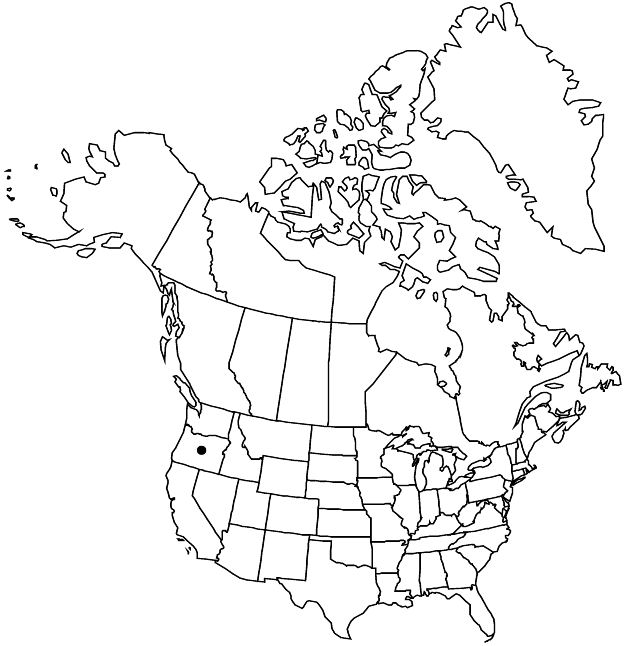Horkelia fusca var. filicoides
Man. Pl. Oregon, 399. 1941.
Stems (1–) 1.5–3.5 (–4) dm. Basal leaves green, 4–9 (–12) cm; leaflets 4–8 per side, cuneate-obovate, 5–12 × 2–8 mm, ± 1/2 as wide as long, divided ± 1/2+ to midrib into 3–9 teeth or lobes, surfaces not obscured, sparsely short-villous to glabrate. Cauline leaves 2–4 (–6); leaflets of proximalmost 2–5 per side. Inflorescences green, open, comprising 1/3–1/2 of stem, flowers usually arranged individually, glandular-hairs sometimes red-septate; bracts acuminate-lobed, not obscuring pedicels and flowers at maturity. Flowers: epicalyx bractlets 1–2 mm; hypanthium 1–2 × 2.5–3.5 mm; petals 2–4 (–5) mm; filaments 0.5–1 mm, ± as wide as long, anthers 0.5 mm; styles 1 mm. Achenes 1.2–1.5 mm.
Phenology: Flowering summer.
Habitat: Open conifer woodlands, mainly on volcanic soil
Elevation: 800–1600 m
Discussion
Variety filicoides is known from the southern Cascade Range of southwestern Oregon, primarily in open lodgepole pine forests north and west of Crater Lake. This is the only variety in which the flowers are usually arranged individually rather than clustered into glomerules, at least in fully expanded inflorescences; some populations out of the core range have more congested inflorescences and are transitional to var. parviflora in this regard.
Selected References
None.
Lower Taxa
"thin" is not a number."/2lengthoftonearlyequaltosepals" is not declared as a valid unit of measurement for this property."dm" is not declared as a valid unit of measurement for this property."dm" is not declared as a valid unit of measurement for this property."dm" is not declared as a valid unit of measurement for this property.
